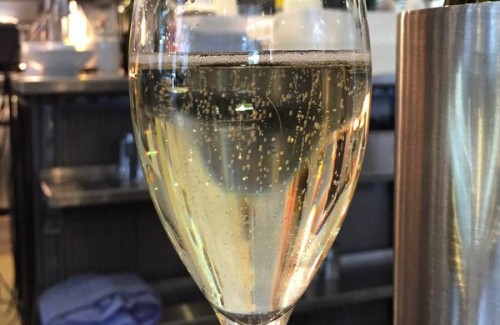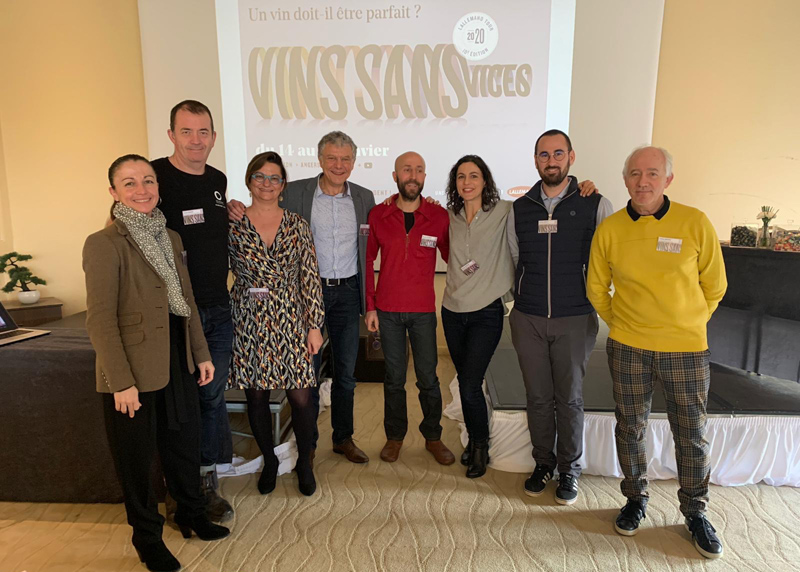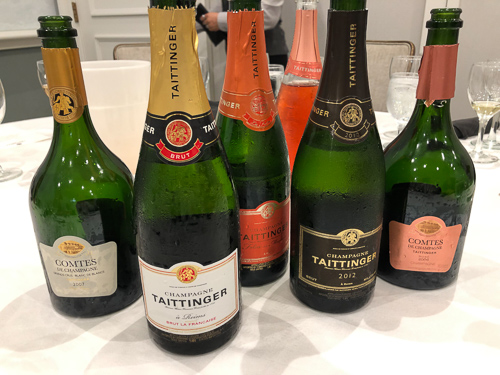
I was reminded last night about how bubbles aren’t really a property of a Champagne (or sparkling wine). I poured the same Champagne into two different glasses. In one, the bubbles were fine – a steady stream. In the other, they were big and clumsy looking. The same wine.
It’s common to hear wine professionals comment on the size of bubbles as being some indication of quality. A good quality Champagne has a steady stream of fine bubbles, while an inexpensive Prosecco has much larger bubbles. That’s how the received wisdom goes.
But it’s a myth, as I was reminded last night.
How many bubbles does a bottle of Champagne have in it? Zero. The same goes for a bottle of Prosecco, or Cava, or English sparkling wine. They all have carbon dioxide dissolved in them, up to pressures of 6 atmospheres. It’s only when they are poured into a glass that the bubbles appear, and the nature of the bubble largely depends on the characteristics of the glass.
It’s also a myth that the way that the carbon dioxide gets into the wine determines the bubble size. Once carbon dioxide is in the wine it doesn’t matter whether it was produced by yeasts or pumped in from a cylinder. It’s the same gas.
So how do glasses affect bubble size? Bubbles are formed from what is known as nucleation sites in the glass. Typically these will be small bits of cellulose fibre (for example, from cleaning cloths) or other imperfections. As the glass is filled, these will harbour microscopic air bubbles that are then able to initiate bubble formation in the wine. The dissolved carbon dioxide comes out of solution at these sites and a stream of bubbles is released. Some glasses are deliberately etched at the bottom to create nucleation sites that will cause a pretty stream of bubbles to flow upwards.
You don’t want too many of these nucleation sites, or else the fizz will disappear too quickly. The Mentos and Coke trick shows what happens when there are far too many: the surface of the Mentos sweet contains so many nucleation sites that there is an explosive eruption of bubbles.
If you were to clean a glass perfectly, for example by using phosphoric acid, then there would be no nucleation sites and no bubbles.
The size of the bubble will, however, be influenced to a degree by the nature of the wine: its viscosity and surface tension will presumably affect bubble size, which could explain why the bubbles in Prosecco do seem a little larger than those in many Champagnes. But it’s not correct to think of the bubble size as a property of the wine, because of the importance of the glass in bubble formation.
9 Comments on On Champagne bubbles


Great post Jamie, thanks! What were the differences between the two glasses you used in your experiment?
I don’t understand this piece. Bubbles appear when you open the bottle of Champagne or sparkling wine, before it is poured into a glass. This article infers that the wine is still until it reacts to particles in the glass which creates the bubbles. This is clearly not the case.
Jamie
Does the pressure and the amount of CO2 in the bottle make a difference?
Prosecco has lower pressue and less CO2 than Champagne, I understand, and Coke has much less, Coke bubbles are much larger.
Have been drinking a lot of Franciacorta lately, at about 4 atmospheres, less CO², less bubbles.
Fascinating as I was always led to believe that although bubbles were formed on imperfections, their size was determined by the wine itself and not the glass.
The temperature of the wine and the speed at which it warms up will change the speed that the gas is released from solution. Maybe that effects size and frequency too.
Why do not quote the work of Gerard Ligier Belair and his great book about bubbles
Hello Jamie
I have great appreciation for your site and can resonate with a lot what you write. On this one, however, I cannot – I think you simply got it wrong. Or the emphasis is misplaced. I do not want to enter into the discussion of physics, lacking the necessary background knowledge, but as ardent champagne tasters, we always use the same glass and the perlage is obviously very different from champagne to champagne, from champagne to methode traditionelle, not to mention other types of sparkling wines. And yes, high quality champagne does have finer perlage. So while glass and small contaminations do play a role, so does the bubbly itself, and I suspect a bigger role. We are more worried about any remains of a detergent – when perlage simply disappears at the rim…
I think the point here is that the visual assessment of the mousse is highly unreliable and the only truly valuable judgements about the quality of the bubbles is on the palate. The appearance in the glass is worth noting but it should be taken with a grain of salt.